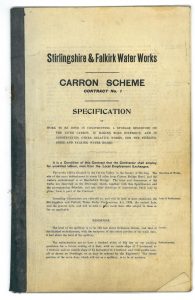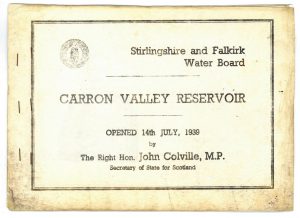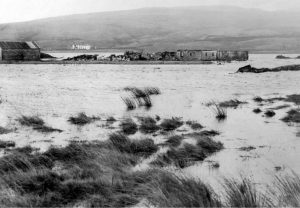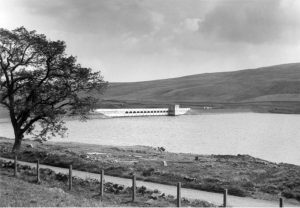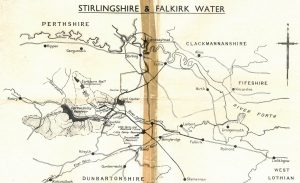The Stirlingshire and Falkirk Water Board was constituted by the Stirlingshire and Falkirk Water Order Confirmation Act in 1921. It was the culmination of long negations between the Falkirk and Larbert Water Trust and the Central and Eastern District Committees of Stirling County Council.
One of the Board’s first undertakings was to enlarge Loch Coulter to the north of Carron Bridge. A serious drought from 1933-1934, however, would ensure their next big project was the creation of the Carron Valley reservoir.
The drought from 1933-1934 was a serious problem for Scotland and the rest of the United Kingdom. Scotland received about 70% less than its normal annual precipitation in 1933. The Stirlingshire and Falkirk Water Board acknowledged the drought raised concerns that there was little difference between the safe yield and daily consumption of water for the area.
In 1935 the Water Board received parliamentary sanction to begin the ambitious Carron Valley Reservoir which would raise the safe yield from 5,250,000 m.g.d (million gallons per day) to 17,500,000 m.g.d.
Photographs of the reservoirs construction show the dramatic change of the landscape. The main work consisted of a main dam over the river Carron, a subsidiary dam over the river Endrick, a drainage area and the laying of three miles of pipes to from the dam to connect to the existing mains. About 1 ½ miles of public road between Carronbridge and Fintry was flooded with a new road built at a higher level. New houses in the area were also built as the project neared its conclusion.
On 14th July 1939, the Carron Valley Reservoir was opened by Secretary of State for Scotland John Colville. It was constructed at cost of £230,000. At the time of its opening it was the largest artificial impounding reservoir in Britain until Ladybower Reservoir was built in 1947. It is about 3 ½ miles long, 1 ½ miles wide, covers a surface area of around 940 acres and has capacity of around 4,300 million gallons!
On 15th May 1968 the Stirling and Falkirk Water Board was replaced by the Mid-Scotland Water Board. The Stirling and Falkirk Water Board produced a commemorative booklet highlighting their achievements of the past fifty years.
The reservoir is now operated by Scottish Water and is a popular destination for cycling, walking, fishing and bird watching. The reservoir saw the successful introduction of the rare freshwater fish Powan from Loch Lomond and Osprey can been fishing in the reservoir during the summer.
